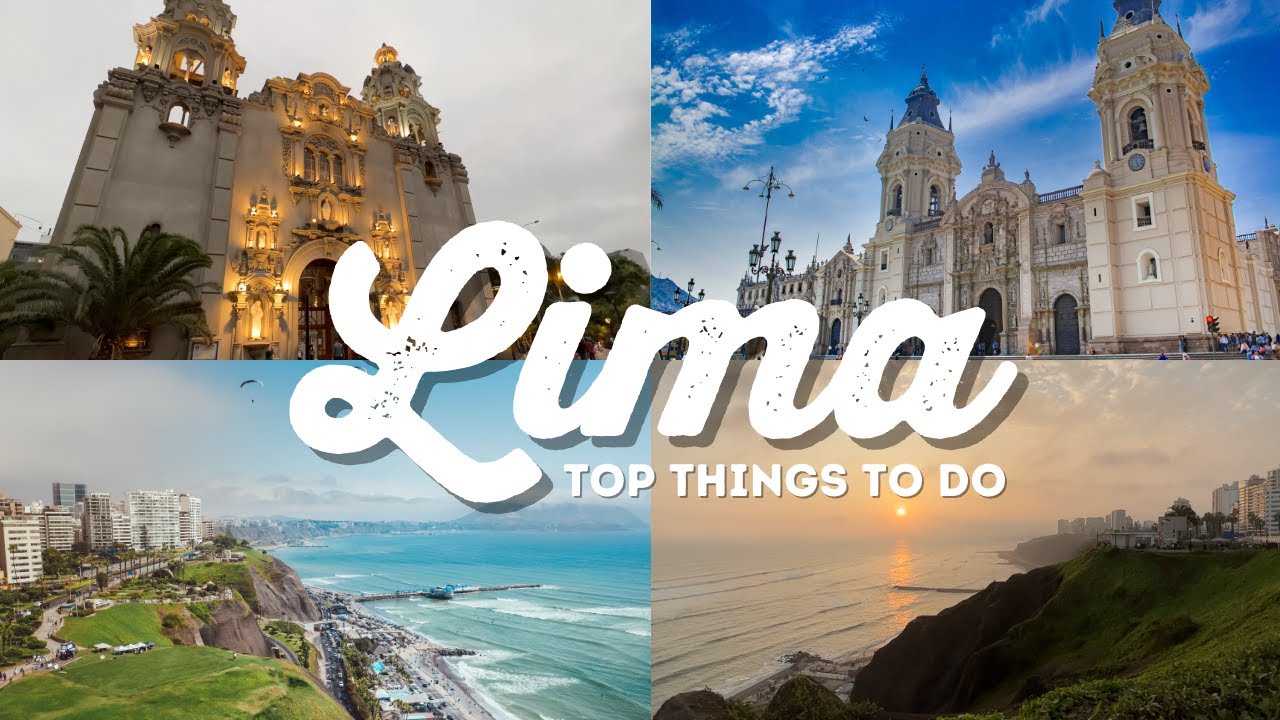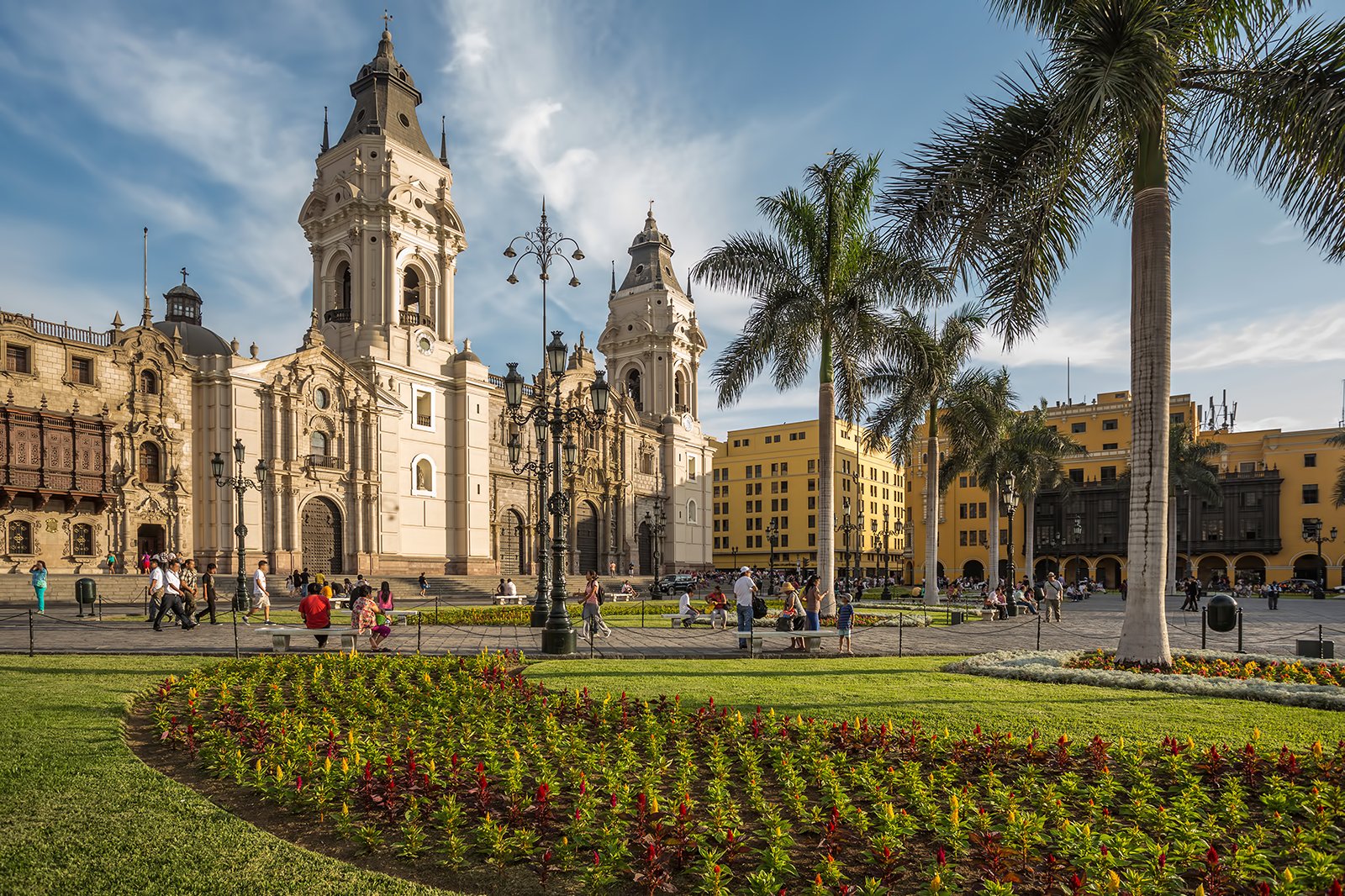
Lima, the vibrant capital of Peru, is a city that defies easy categorization. It’s a sprawling metropolis where ancient Incan ruins rub shoulders with glittering modern skyscrapers, where world-renowned culinary artistry meets bustling local markets, and where the Pacific Ocean whispers tales of maritime history. For many, Lima is the gateway to Peru, the launching pad for adventures into the Andes or the Amazon. But to rush through this captivating city would be to miss a rich tapestry of experiences, a profound blend of history, culture, and unparalleled gastronomy.
This comprehensive guide aims to equip you with everything you need to embark on an unforgettable journey to Lima, from understanding its historical roots to navigating its vibrant streets and indulging in its legendary flavors.
A Glimpse into Lima’s Storied Past

Related Articles about Lima: A Culinary and Cultural Tapestry Beckoning the Traveler:
- Kenya: A Journey Through the Heart of Africa – Your Comprehensive Travel Guide
- Emerald Dreams and Bespoke Stays: Unveiling Ireland’s Best Hotels and Unforgettable Experiences
- Aloha Spirit and Volcanic Wonders: Unveiling Hawaii’s Top Attractions
- Montreal: A Symphony of Culture, History, and Culinary Delights
- Hanoi: A Journey Through Time and Culture
Lima’s story is as layered as its culinary landscape. Founded by Spanish conquistador Francisco Pizarro in 1535, it was christened "City of Kings" and quickly became the most important city in Spanish America, the administrative and economic heart of the Viceroyalty of Peru. This colonial legacy is vividly preserved in the UNESCO World Heritage-listed Historic Centre, a labyrinth of ornate churches, grand mansions with intricately carved wooden balconies, and expansive plazas.
However, Lima’s history predates the arrival of the Spanish. Archaeological sites scattered throughout the city offer glimpses into pre-Incan civilizations like the Lima, Ichma, and Maranga cultures, whose intricate pottery and monumental adobe structures speak of advanced societies. The Incas, too, left their mark, though their presence was relatively short-lived before the Spanish conquest.
The 19th century saw Lima become a hotbed of independence movements, culminating in Peru’s declaration of independence in 1821. The city weathered earthquakes, revolutions, and periods of economic boom and bust, each leaving an indelible imprint on its character. In recent decades, Lima has undergone a remarkable transformation, emerging as a global culinary capital and a dynamic hub of South American culture, blending its historical gravitas with a forward-looking spirit.
Unveiling Lima’s Top Attractions
Lima’s attractions cater to a diverse range of interests, ensuring there’s something to captivate every traveler.
1. Historic Centre (Centro Histórico): This is the beating heart of colonial Lima.
- Plaza Mayor (Plaza de Armas): The grand central square, surrounded by the Presidential Palace, the Cathedral of Lima, the Archbishop’s Palace, and the Municipality. Marvel at the colonial architecture and the beautiful fountain.
- Cathedral of Lima: A magnificent example of colonial religious architecture, housing the tomb of Francisco Pizarro.
- Convento de San Francisco: Famous for its catacombs, a chilling testament to the city’s past, and its stunning library.
- Monasterio de San Agustín: Another impressive colonial convent with beautiful cloisters and religious art.
- Casa de Aliaga: The oldest continuously inhabited house in the Americas, offering a glimpse into aristocratic colonial life.
- Balconies of Lima: Wander through the streets and admire the intricate wooden balconies adorning many colonial buildings, a unique architectural feature.

2. Miraflores: The Modern Coastal Gem: This upscale district is a popular choice for tourists, offering a blend of modern amenities, beautiful parks, and stunning ocean views.
- Malecón de Miraflores: A cliff-top promenade stretching for miles, perfect for walking, cycling, and enjoying panoramic Pacific vistas. Don’t miss the Parque del Amor (Love Park) with its iconic sculpture and mosaics.
- Larcomar: A modern shopping mall built into the cliffs, offering boutiques, restaurants, cinemas, and breathtaking ocean views.
- Huaca Pucllana: An impressive adobe pyramid from the Lima culture, dating back to 200-700 AD. It’s a fascinating archaeological site located right in the middle of Miraflores.
3. Barranco: The Bohemian Soul: Lima’s artistic heart, Barranco is a charming bohemian district known for its vibrant street art, art galleries, lively bars, and picturesque streets.
- Puente de los Suspiros (Bridge of Sighs): A romantic wooden bridge where locals believe wishes come true if you can cross it holding your breath.
- Art Galleries and Boutiques: Explore the colorful streets and discover unique artwork, handcrafted souvenirs, and trendy fashion.
- Bajada de Balta: A scenic path leading down to the beach, offering stunning views.
4. Gastronomic Delights: Lima is a world-renowned culinary capital, and experiencing its food scene is paramount.
- Ceviche: The national dish, a refreshing and zesty raw fish marinated in lime juice, chili, and onions.
- Lomo Saltado: A delicious stir-fry of beef, onions, tomatoes, and french fries, often served with rice.
- Aji de Gallina: Creamy shredded chicken in a spicy yellow chili sauce.
- Anticuchos: Skewered and grilled beef hearts, a popular street food.
- Pisco Sour: The iconic Peruvian cocktail made with pisco, lime juice, egg white, and bitters.
- Fine Dining Restaurants: Lima boasts numerous Michelin-starred and highly acclaimed restaurants offering innovative Peruvian cuisine.
- Local Markets: Immerse yourself in the vibrant atmosphere of markets like Mercado de Surquillo and Mercado de San Blas for fresh produce and local delicacies.
5. Museums:
- Museo Larco: Housed in an 18th-century vice-royal mansion, this museum boasts an impressive collection of pre-Columbian art, including erotic pottery and gold artifacts.
- Museo de la Nación: Showcases the history and archaeology of Peru, from ancient civilizations to the present day.
- Museo de Arte de Lima (MALI): Features a vast collection of Peruvian art spanning over 3,000 years.
Essential Travel Tips for Lima
Navigating a bustling metropolis like Lima can be made smoother with a few key tips:
- Currency: The official currency is the Peruvian Nuevo Sol (PEN). US dollars are also widely accepted in tourist areas, but it’s advisable to carry local currency for smaller purchases and local transport.
- Language: Spanish is the official language. While English is spoken in tourist hotels and popular restaurants, learning a few basic Spanish phrases will greatly enhance your experience.
- Safety: Like any large city, Lima has its share of petty crime. Be aware of your surroundings, especially in crowded areas and at night. Avoid displaying expensive jewelry or electronics openly. Use reputable taxis or ride-sharing apps.
- Altitude: Lima is at sea level, so you won’t experience altitude sickness. However, if you plan to visit other parts of Peru, remember to acclimatize gradually.
- Water: It’s best to drink bottled water to avoid any stomach upsets.
- Tipping: Tipping is customary in restaurants (around 10%) and for tour guides and drivers.
- Bargaining: Bargaining is common in markets and with street vendors, but do so respectfully.
- Sun Protection: The sun can be strong, even on cloudy days. Wear sunscreen, a hat, and sunglasses.
Accommodation Options in Lima
Lima offers a wide spectrum of accommodation to suit every budget and travel style:
- Luxury Hotels: Miraflores and San Isidro boast world-class hotels with stunning ocean views, fine dining, and impeccable service. Expect international brands and sophisticated amenities.
- Boutique Hotels: Barranco is home to charming boutique hotels, often housed in converted colonial mansions, offering a more intimate and artistic atmosphere.
- Mid-Range Hotels: You’ll find a good selection of comfortable and well-located mid-range hotels in Miraflores, San Isidro, and other central districts.
- Hostels: For budget travelers and backpackers, numerous hostels in Miraflores and Barranco offer dormitory beds and private rooms, often with social common areas.
- Apartment Rentals (Airbnb): Renting an apartment can be a great option for families or longer stays, offering more space and the ability to cook your own meals.
Neighborhoods to Consider:
- Miraflores: Ideal for first-time visitors, offering convenience, safety, and proximity to attractions and amenities.
- Barranco: Perfect for those seeking a bohemian vibe, art, nightlife, and a more local feel.
- San Isidro: A more upscale and business-oriented district, offering a sophisticated atmosphere and beautiful parks.
- Centro Histórico: For history buffs, staying in or near the historic center provides unparalleled access to colonial landmarks, though it can be noisier and less modern.
Getting Around Lima
Lima’s transportation system can be a bit chaotic but is generally manageable with a little planning.
- Taxis: The most common way to get around. Always use official taxis or reputable ride-sharing apps like Uber or Cabify. Agree on the fare before you start your journey or ensure the meter is used.
- Ride-Sharing Apps (Uber/Cabify): These are highly recommended for safety and convenience. They offer fixed prices and a traceable record of your journey.
- Metropolitano Bus System: This is a modern and efficient bus rapid transit system that connects many parts of the city. It’s a good option for getting to and from the airport and for navigating major avenues. Purchase a rechargeable card for easy travel.
- Local Buses (Combis): While the cheapest option, these buses can be crowded, confusing, and prone to aggressive driving. They are generally not recommended for tourists.
- Walking: In districts like Miraflores and Barranco, walking is a great way to explore the local streets, parks, and shops.
Getting to and from Jorge Chávez International Airport (LIM):
- Airport Taxis/Remises: Official airport taxis are available, but can be more expensive. Pre-booked airport transfers or using ride-sharing apps upon arrival are also good options.
- Airport Express Lima Bus: A comfortable and direct bus service that connects the airport to Miraflores and other key locations.
- Metropolitano Bus: You can take a bus from near the airport to a Metropolitano station and then connect to the city.
The Best Time to Visit Lima
Lima enjoys a temperate climate year-round, but the best time to visit depends on your preferences:
- March to May (Autumn): This is arguably the best time to visit. The weather is pleasant, with sunny days and mild temperatures. The summer crowds have dispersed, making it a more relaxed experience.
- September to November (Spring): Similar to autumn, spring offers agreeable weather with blooming flowers and comfortable temperatures. It’s another excellent period for outdoor exploration.
- December to February (Summer): This is the peak tourist season, with warmer temperatures and more sunshine. However, it can also be more crowded and prices for accommodation might be higher. The coast can be humid.
- June to August (Winter): Lima experiences a unique "garúa" (drizzle) during these months, characterized by overcast skies, high humidity, and cool temperatures (around 14-19°C or 57-66°F). It’s generally not the most visually appealing time for the coast, but it’s a good time for indoor activities and exploring museums.
Key Considerations:
- Rainfall: Lima receives very little rainfall throughout the year. The "winter" months are more about persistent cloud cover and humidity than heavy downpours.
- Crowds: Avoid major holidays if you prefer fewer crowds.
Conclusion: A City of Endless Discovery
Lima is a city that rewards curiosity and embraces the adventurous spirit. It’s a place where history whispers from ancient stones, where the ocean breeze carries the scent of the sea, and where every meal is a culinary revelation. Whether you’re drawn by its rich colonial past, its vibrant contemporary culture, or its world-renowned gastronomy, Lima offers an experience that is both deeply enriching and undeniably exhilarating. So, pack your bags, open your mind, and prepare to be captivated by the multifaceted charm of this extraordinary South American capital. Your Lima adventure awaits.





